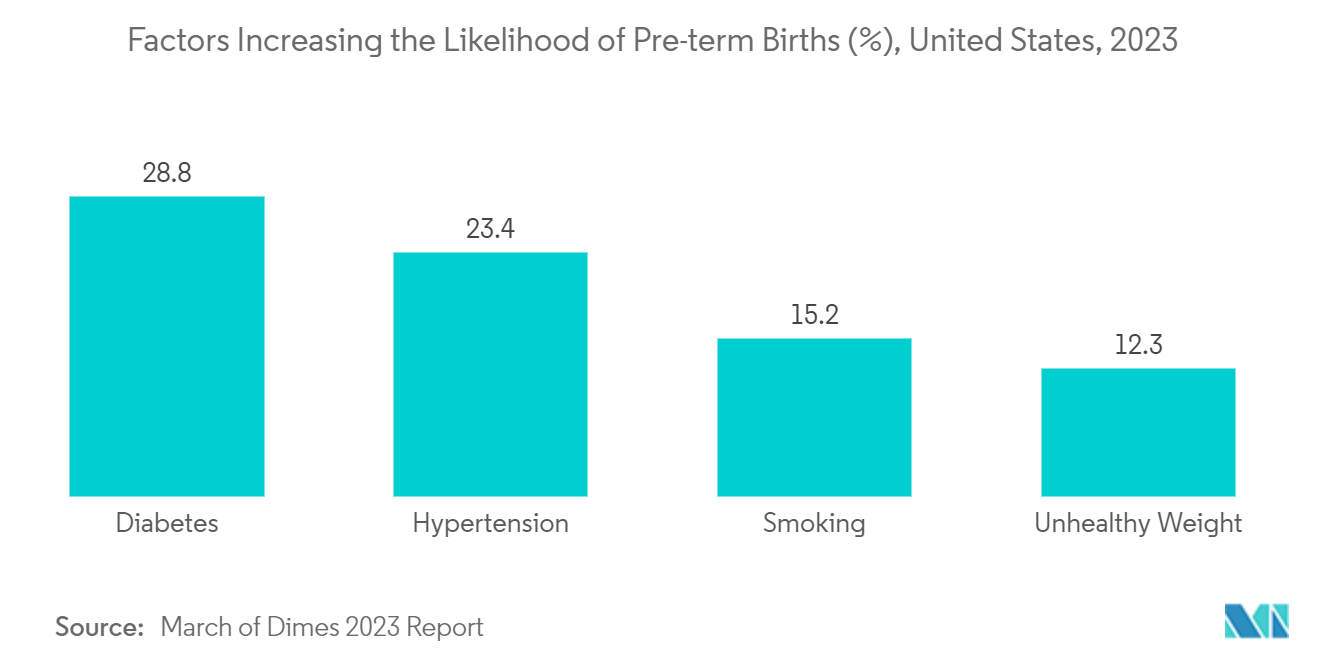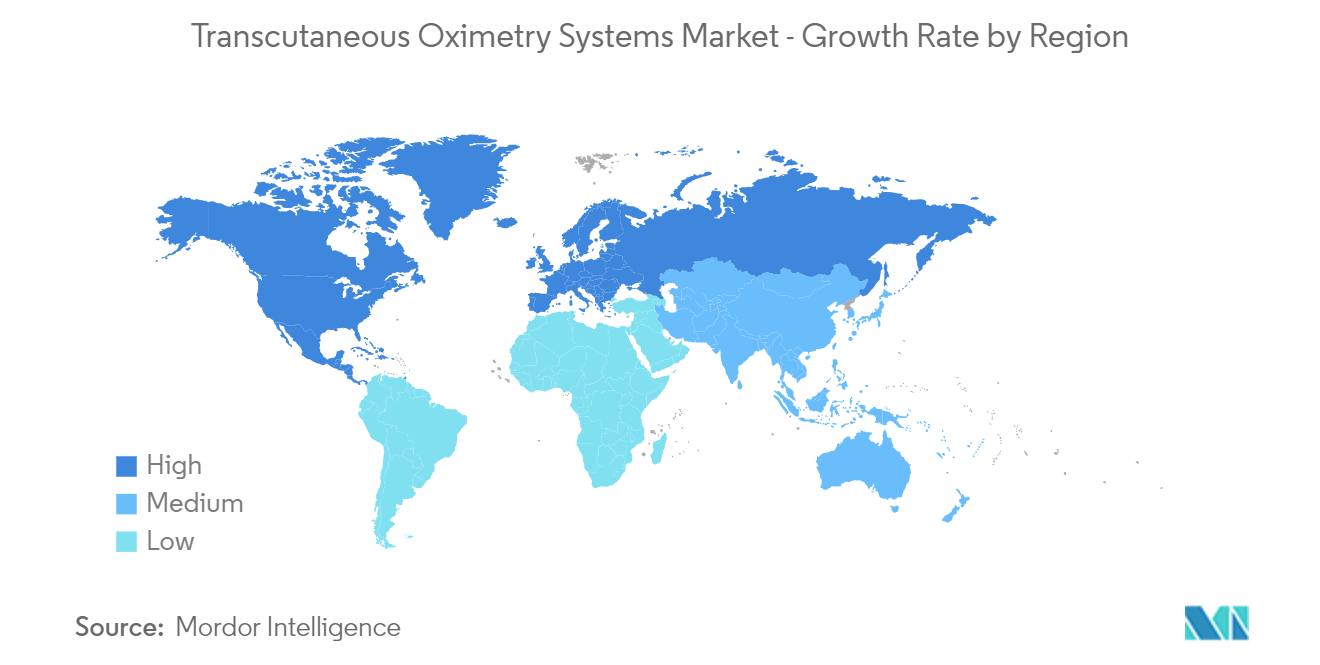Market Trends of Transcutaneous Oximetry Systems Industry
Preterm Births are Expected to Register High Growth During the Forecast Period
- The preterm births segment is expected to witness significant market growth due to an increase in preterm births worldwide in which premature babies in the NICU are fragile and, therefore, at risk of sudden changes in oxygenation and carbon dioxide levels. This can cause severe complications. Transcutaneous monitoring in neonates provides a real-time overview of the patient's often fluctuating oxygenation (tcpO2) and ventilation (tcpCO2) status. For instance, as per the November 2022 update by WHO, every year, an estimated 15 million babies are born preterm (before 37 completed weeks of gestation).
- Moreover, as per the article published in May 2022 in the Paediatric Medicine journal, transcutaneous oxygen monitoring and pulse oximetry were widely adopted by neonatal clinicians for many years. Even though pulse oximeters are less suitable than transcutaneous pO2 (tcpO2) monitors for detecting dangerous hyperoxemia in extremely preterm infants. This is because large changes in oxygen tension may lead to small or no changes in saturations because of the flattening of the upper part of the S-shaped oxygen dissociation curve. Thus, owing to the increase in advantages offered by the transcutaneous oxygen system in preterm births compared to other oximeters, the segment is expected to witness significant growth during the forecast period.
- Hence, an increase in preterm births and the utilization of transcutaneous oximetry systems for detecting oxygen levels in preterm births are expected to drive the segment’s growth.

North America Anticipated to Hold a Significant Market Share During the Forecast Period
- North America is expected to hold a significant market share during the forecast period due to an increase in the prevalence of peripheral vascular disorders, wound healing disorders, a rise in preterm births, and a surge in research and development in the region.
- The rising number of preterm birth cases in the United States is anticipated to fuel the need for regular monitoring of the partial pressure of oxygen or oxygen tension in preterm infants, propelling the demand for transcutaneous oximetry in the market. For instance, according to the November 2023 March of Dimes report, approximately 380,548 babies were born prematurely before 37 weeks in the United States. The report highlighted a concerning trend where black and American Indian/Alaskan Native (AI/AN) women exhibited a 54% higher likelihood of preterm birth compared to white women in the United States. Hence, the high burden of preterm births is likely to increase the demand for transcutaneous oximetry and is expected to fuel the market’s growth during the forecast period.
- Moreover, the growing prevalence of diabetes, along with an increase in spending on healthcare management, is anticipated to fuel market growth. For instance, according to the 2022 statistics published by the International Diabetes Federation, about 32 million people in the United States were living with diabetes, and this number is projected to increase to 34 million and 36 million by 2030 and 2045, respectively.
- Similarly, as per the abovementioned source, about 17 million and 21.1 million people in Mexico are expected to suffer from diabetes by 2030 and 2045, respectively. Thus, the expected high number of diabetic population increases its risk of developing severe wounds or ulcers that do not heal immediately. This is anticipated to raise the demand for transcutaneous oximetry as it is used to assess peri-wound oxygenation and microcirculatory blood flow objectively, bolstering market growth.
- Furthermore, the growing adoption of transcutaneous oximetry across healthcare facilities for monitoring wound healing and peripheral vascular diseases is anticipated to contribute to the market’s growth during the forecast period. For instance, as per the August 2022 update in the National Institute of Health, transcutaneous oximetry became increasingly popular for wound assessment and patient selection for hyperbaric oxygen therapy (HBOT) owing to its wide application as it is used for serial assessment of peri-wound oxygenation, in the diagnosis of critical limb ischemia, and the prediction of the outcome of non-healing wounds and amputation. Thus, with the increasing advantages and applications offered by transcutaneous oximetry systems, the adoption of such systems is expected to increase, which is anticipated to augment the market’s growth during the forecast period.
- Hence, the rise in diabetic mellitus, the increase in preterm births, and the growing adoption of transcutaneous oximetry systems are expected to drive market growth in North America during the forecast period.


